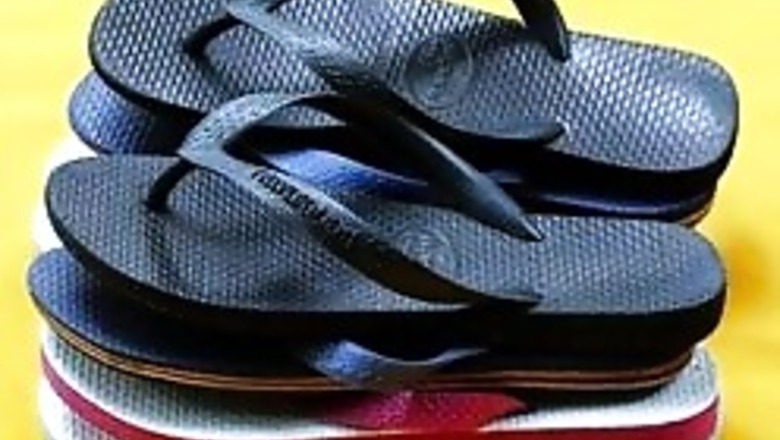
views
New York: With more women wearing flip-flops to the office this summer, US style gurus are warning that the casual shoe once mainly seen on the beach could be damaging to careers - as well as to feet.
Lauren Cardinale, 25, who works at West Glen Communications, wears beaded or other fancy flip flops to the office - when she can get away with it.
"Occasionally I wear flip flops to work," she said. "I wear nicer shoes if I'm meeting with clients or if I know there will be someone in the office who doesn't approve of flip flops."
Cardinale is one of thousands of young women in New York who consider flip-flops an essential part of their summer wardrobe.
An online survey conducted for retailers Old Navy and Gap found flip-flops topped the list of wardrobe items that college and high school students planned to wear to work this summer.
More than 31 per cent of women said flip-flops were the single "must have" item for work this summer.
But many companies disagree.
"The dress code says no beach wear and flip-flops are considered beach wear," said a spokeswoman for BNP Paribas.
Style gurus warn that flip-flops, which are worn mainly by younger women, could be harmful to a career.
"Shoes convey the mood of a woman. Wearing flip-flops conveys the mood that you are relaxed and on vacation. That's not a good message in the office," said Meghan Cleary, a style commentator who wrote the book "The Perfect Fit: What Your Shoes Say About You."
Doctors say it's not just careers they could harm.
Physicians at the American College of Foot and Ankle Surgeons say flip-flops are linked to a growing number of heel problems among teens and young adults.
"We're seeing more heel pain than ever in patients 15 to 25 years old, a group that usually doesn't have this problem," said spokeswoman Marybeth Crane in a recent statement.
She said flip-flops with thin soles have no arch support and can accentuate any abnormal biomechanics in foot motion which eventually brings pain and inflammation.
PAGE_BREAK
$140 for flip-flops?
Flip-flops are far from new, dating back at least 70 years and believed developed out of traditional Japanese woven or wooden soled sandals in New Zealand.
The basic flat sole with a Y-shaped strap, that passes between the toes and around either side of the foot, is known in every nation and to every social class.
In developing countries, they are the cheapest - and often only - form of footwear, easy to make and easy to fit.
The term "flip-flop" derives from the noise they make while slapping against the wearer's heels and the floor but they are also known as thongs in Australia, jandals in New Zealand, and slippers in Hawaii.
But flip-flops took on a new life among the young and trendy a few years ago. They have surged in popularity with shops now selling them in every conceivable color, with sequins, flowers, and even bridal flip-flops with over 300 Swarovski crystals on the straps for about $140 a pair.
Last June the Northwestern University's champion women's lacrosse team was widely criticized for wearing flip-flops when they visited the White House and met President George W Bush.
Ellen Campuzano, president of the Committee of Color and Trends, a New York-based forecasting service specializing in footwear and accessories, thinks flip-flops' popularity will wane.
"Usually these trends come and go in about five years," she said. "I think we've reached the peak, they can't be any more widespread, so maybe next summer something will replace them."




















Comments
0 comment